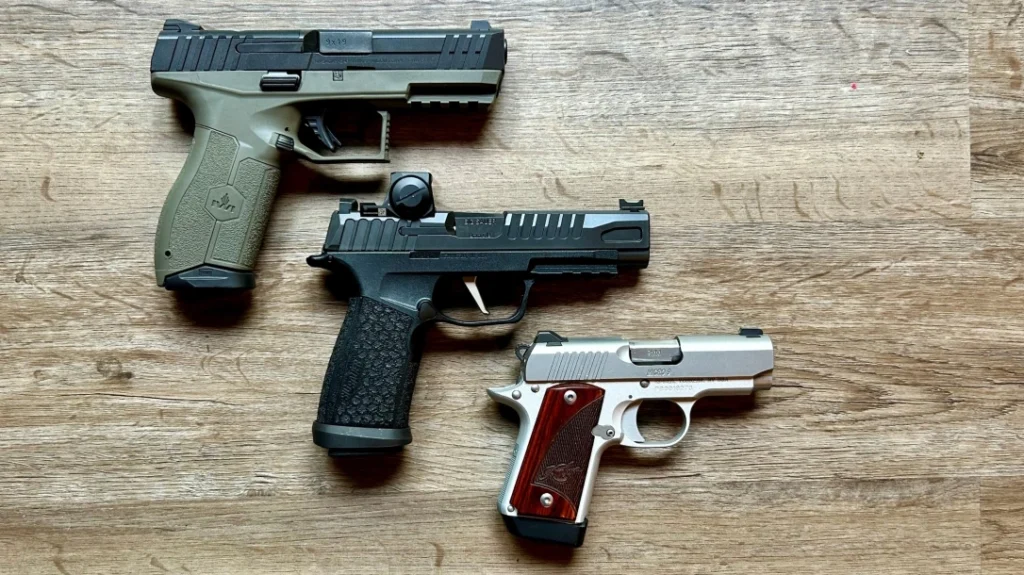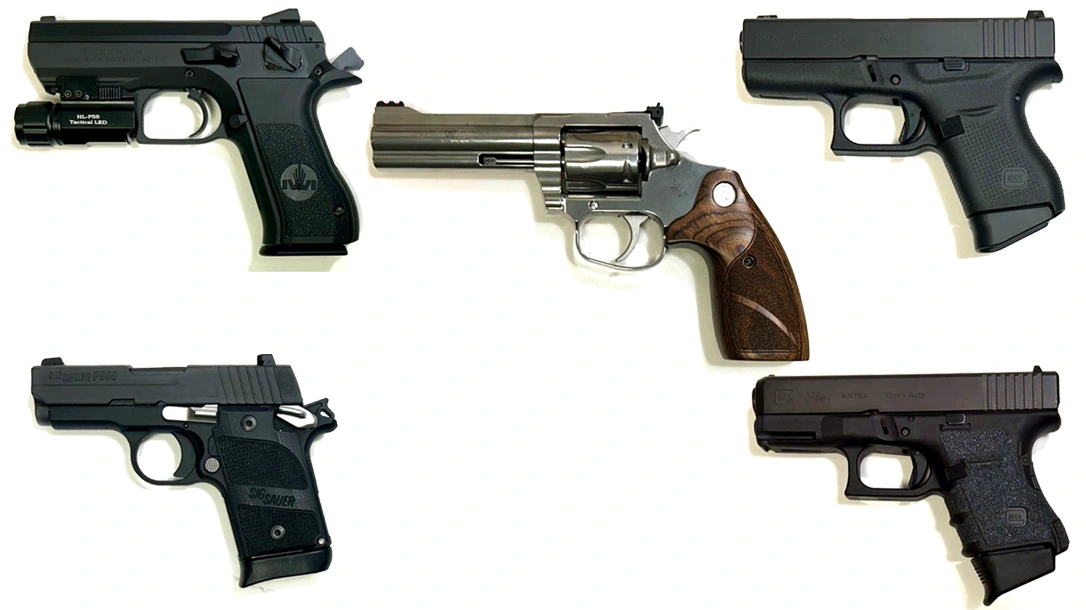I have penned many top 5 or top 10 lists over the years. They typically have titles like “top 5 best,” “top 5 worst,” or “top 5 for this very specific situation.” I have been carrying in one form or another since Glocks were first introduced. However, I have changed my CCW handguns many times over the years for many various reasons. The result is that I have carried many different guns in many ways over the last three decades.
5 Top CCW Handguns I Have Said Goodbye To
Someone recently asked me what handguns I have carried but no longer carry, yet would still recommend. Creating this list required me to think of every gun I have carried, why I chose to stop carrying it, and whether that reason left room for me to still recommend the gun to others.
Let’s first establish a few rules for this list:
Advertisement — Continue Reading Below
- One – any gun on this list must be reliable. In other words, if I stopped carrying it due to reliability issues, it was removed from consideration.
- Two – any gun on this list needed to be mechanically easy to use, including the ability to draw and present it from its carry position. Again, if a gun was difficult to manipulate or hard to access it would not be on this list.
- Three – any gun on this list had to be defensively accurate at most ranges likely to be needed for self-defense.
- Finally, all these guns still needed to be easily available today.
These rules helped remove a fair number of guns from the list, as well as any I still currently carry. I will discuss the advantages of each gun listed, why I am not currently carrying it, and why I still recommend it.
Colt King Cobra in .357 Magnum
One of my earlier defensive guns was a Colt 1911. However, the simplicity of the Colt King Cobra and the ballistics of the .357 Magnum compared to the .45 ACP convinced me that losing a few rounds was a worthwhile trade. This was also a time when I rarely included capacity in my decision-making.
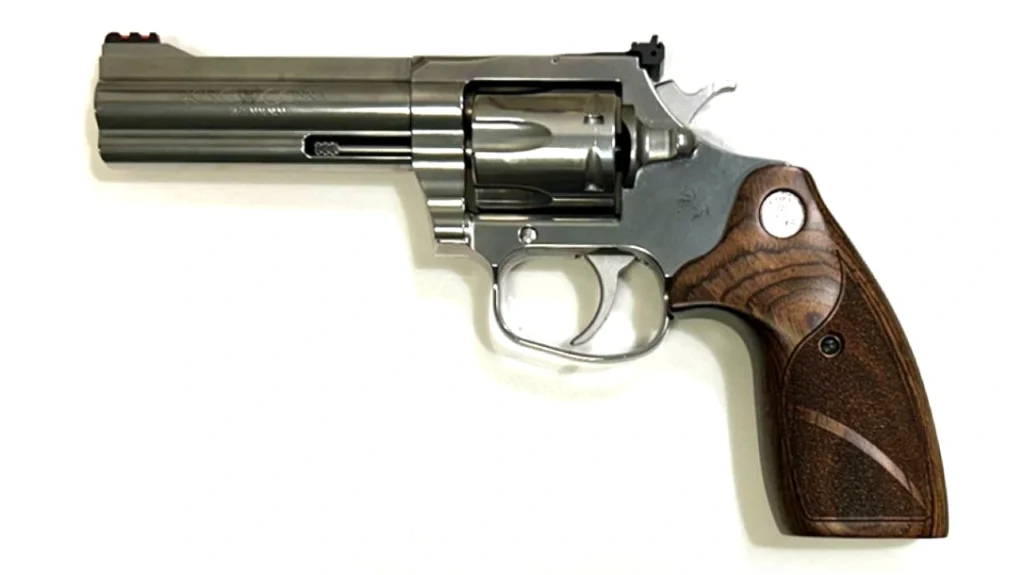
Advertisement — Continue Reading Below
I carried a King Cobra sporadically for years. It was still the revolver in my rotation until a few years ago. There is a lot to love in this revolver (both the original and the newer re-release). You get the mechanical simplicity of a revolver with a consistent and smooth trigger. Not to mention, it is chambered in the effective .357 Magnum caliber.
The disadvantages include capacity (6 rounds) and size and weight. The latter was less of a concern when I was younger, as I could generally conceal a larger frame gun in all but the lightest clothes.
I would still recommend this firearm for someone wanting the simplicity of a revolver, and the gun’s size and weight are less of an issue. The reason I stopped carrying this gun had more to do with the increase in the ballistics of semi-automatic rounds. Likewise, I have had a change in my focus toward capacity, and the past 30 years have seen an increase in the reliability of semi-automatics. I also started looking for guns that are more easily concealable year-round.
Advertisement — Continue Reading Below
For more information, please visit Colt.com.
IWI Jericho 941 in .45 ACP and 9mm
I was looking for something a little different and more modern than my 1911 with a later semi-automatic. However, I wanted to keep the .45 ACP ammunition. The IWI Jericho was a great fit for this. It provided a simpler platform designed around the popular CZ-75 short recoil design and a greater capacity.
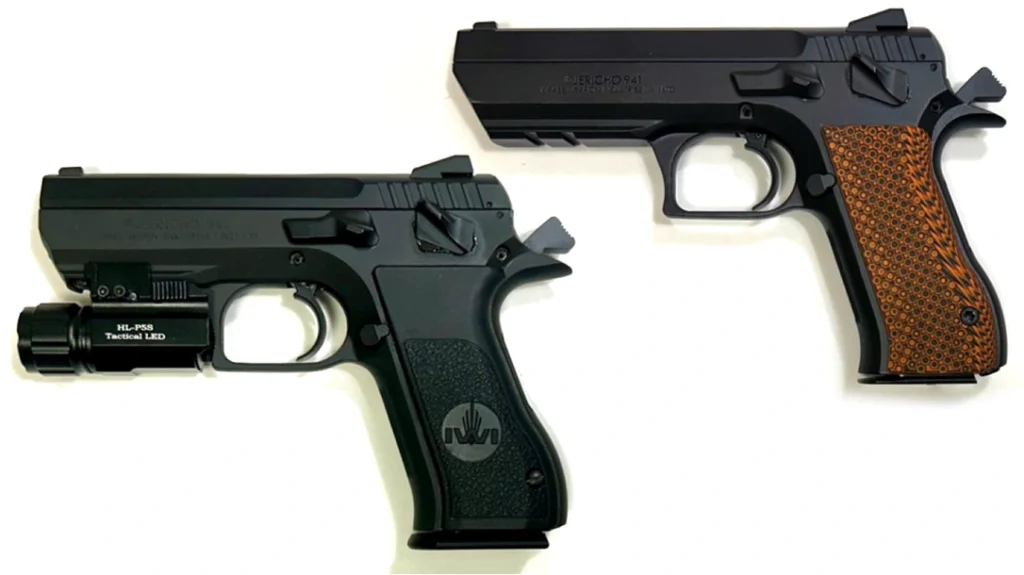
Advertisement — Continue Reading Below
I carried this, and later the 9mm version, for years and trusted the gun implicitly. The 9mm version (the .45 ACP has become hard to find) has a 16-round magazine and external safety, all at an affordable price point.
I stopped carrying the IWI Jericho on the advice of a sports doctor. I was having lower back issues that had impacted my ability to run. As the doctor asked me to do various activities to evaluate my balance and stance, he finally asked if I commonly wore something weighing 3-5 pounds on my back right hip. I sheepishly admitted I regularly carried a full-frame metal gun (the IWI Jericho).
His medical advice was to “get a Glock” (or at least a lighter polymer gun). The overall difference was about a pound lighter, but I did it and quickly found relief from my back issues. I have carried slightly smaller and lighter polymer guns as my daily carry ever since.
Advertisement — Continue Reading Below
I would still recommend the IWI Jericho to anyone who is looking for a very accurate and reliable 9mm with a solid capacity, as long as weight is not an issue.
For more information, please visit IWI.us.
Glock 20/29 in 10mm
As I started carrying and teaching others to carry more regularly, I became systematic in selecting a carry gun. I decided on a set of timed tests to determine what would be my carry handgun. This was driven by the concept of carrying the biggest caliber you can comfortably shoot.
Advertisement — Continue Reading Below
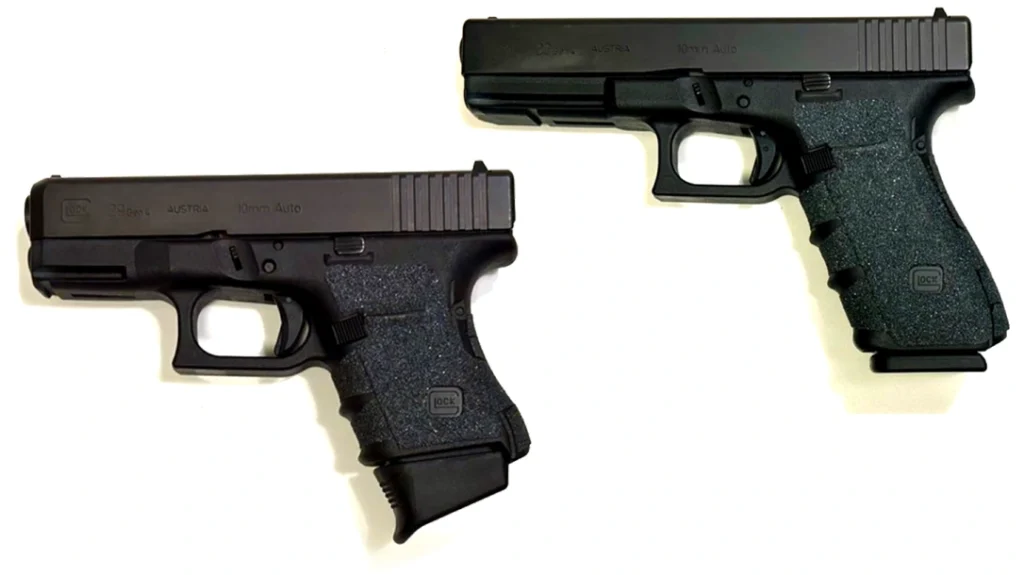
These timed tests included accuracy at 10 and 15 yards with 1, 2, or 3 shots from the holster. I was more accurate and faster with 9mm handguns at longer ranges. However, there was no significant difference in my speed or accuracy at defensive distances when switching from 9mm to 10mm.
Based on these tests, I started carrying the Glock 20 and smaller Glock 29, both chambered in 10mm, instead of the Glock 17 and 26 chambered in 9mm.
Advertisement — Continue Reading Below
I conducted similar tests each year and carried 10mm for many years. Unfortunately, age and joint issues caught up with me a few years ago, and I was significantly faster and/or more accurate with 9mm. So, I switched to 9mm, and I have not gone back since.
These guns bring Glock’s reliability to a powerful round with similar ballistics to higher-powered revolver rounds but in a semi-automatic. If someone is less concerned with potential over-penetration and can shoot 10mm with reliable speed and accuracy, the Glock 20 or 29 is quick to earn my recommendation.
For more information, please visit us.Glock.com.
Advertisement — Continue Reading Below
Sig Sauer P938 in 9mm
Early in my carrying experience I often carried the Walther PPKS. This was likely somewhat inspired by James Bond. However, it was also a smaller defensive pistol when there were not many options on the market.
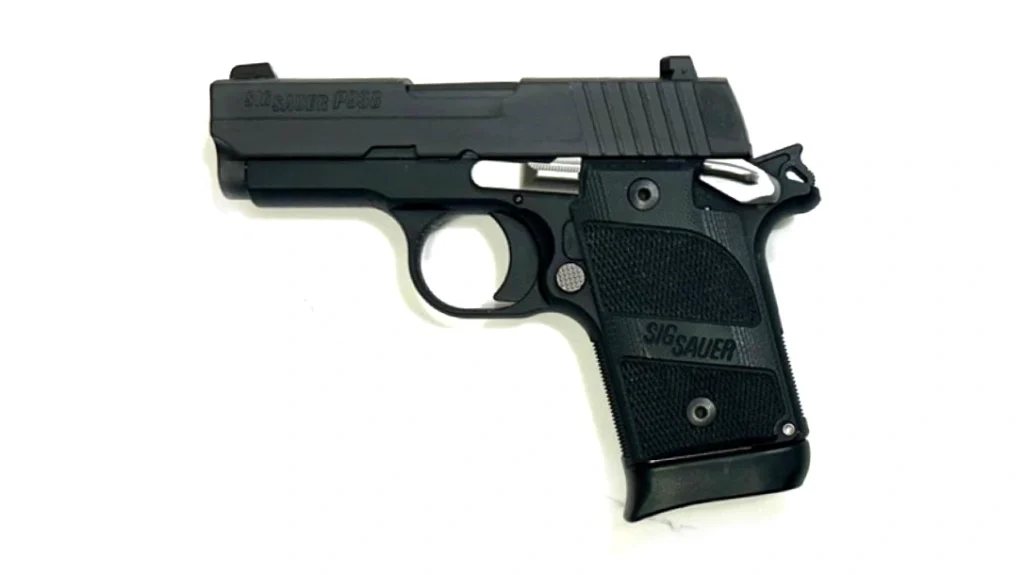
Later, I moved to larger-frame guns, but about a decade ago, I also started carrying a backup pistol. The first of these was the Sig Sauer P938 in 9mm. There was a time when Sig Sauer had dozens of options for the P938, and I carried the Nightmare version.
Today, with the advent of the Sig Sauer P365, only a few models of the P938 are still available new. However, most gun stores still have many of the older versions. If you are looking for a small, reliable, and (for a small gun) pleasant-shooting micro-compact with an external safety, it is hard to go wrong with this mini-1911-style gun.
The biggest drawback compared to the P365 is its capacity, but the P938 is still a solid option. Although it is all metal, it is a little lighter. If someone is looking for a very easy-to-conceal gun with an external safety, I would recommend the P938.
For more information, please visit SigSauer.com.
Glock 43 in 9mm
One might assume that I replaced the Sig Sauer P938 with the P365 model. However, it was the release of the Glock 43 that took the place of the P938 as my backup gun.
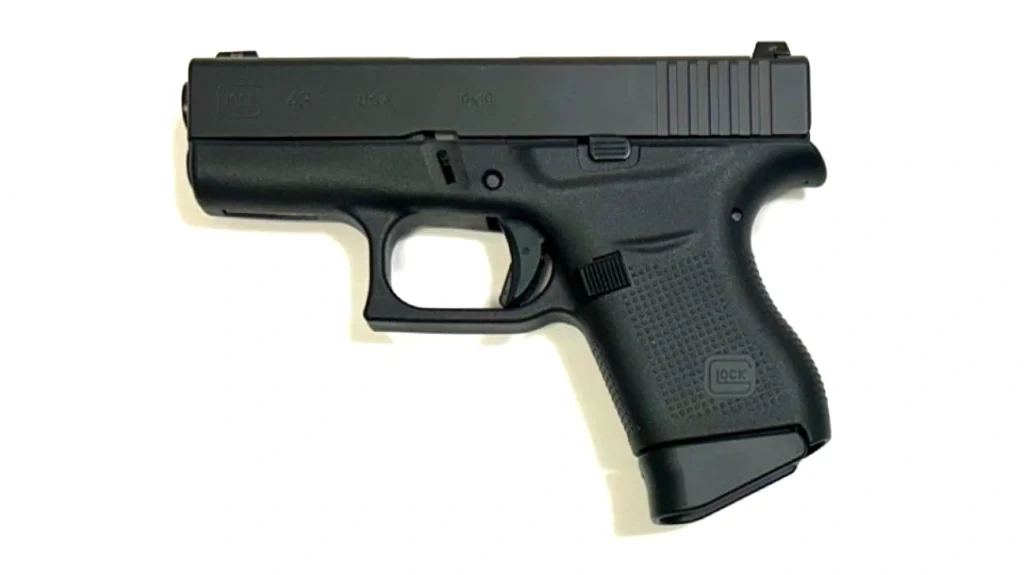
The Glock 43 and the Sig Sauer P938 are very comparable in terms of size, weight, and capacity. However, when the Glock 43 became available it was appealing to have my backup gun use the same system as my primary (at the time a Glock 20). I was also very actively competing and running Glocks. So, I was also getting more trigger time behind the platform in general.
The downside for me was that although it was a great and reliable gun, I honestly wanted something even a little smaller as a backup gun. Additionally, I slowly moved away from going to as many competitions. Finally, as I moved from Glocks as my primary carry, the reason for staying with the Glock 43 was also less clear.
I still admire the Glock 43 and think that if you are used to Glocks and are looking for a small easily concealable option it is hard to go wrong with this option.
Conclusion
All of these guns are solid choices for defensive use. However, I stopped regularly carrying them due to changing needs and roles. In all five cases, this was not due to any fault in the firearm. Nevertheless, they all remain guns I would recommend depending on what someone is looking for.
My current primary carries include an IWI Masada in an OWB holster or a Sig Sauer P365 Fuse in an IWB holster with a Kimber Micro 9 as my backup in a calf holster. Although they are my current choices, who knows what new guns or how my thoughts may continue to evolve in the future?
